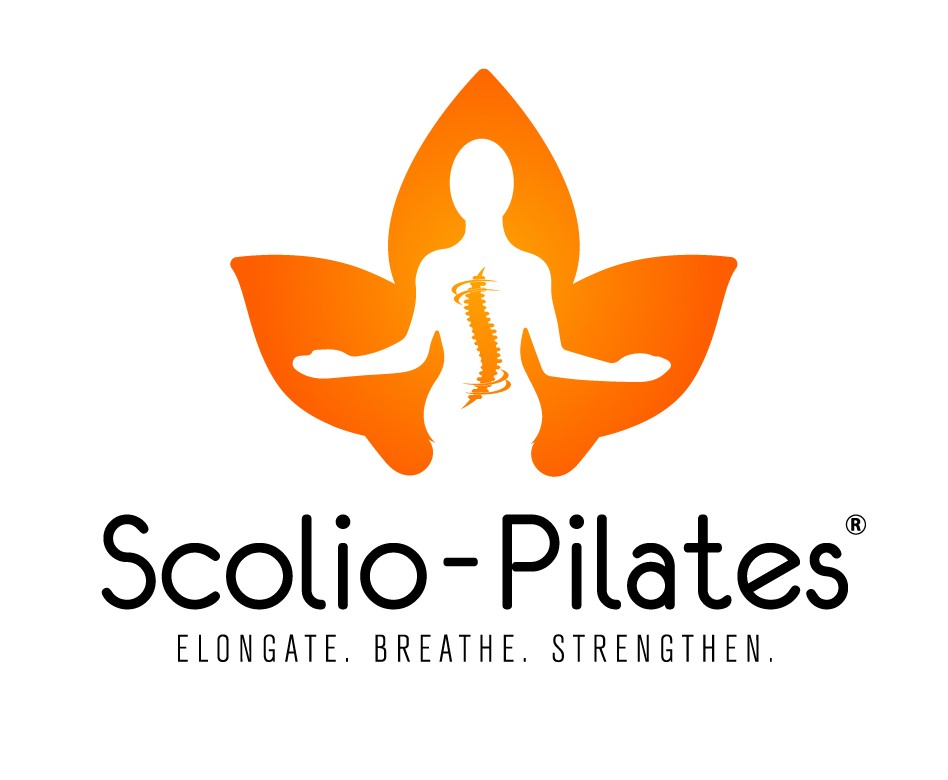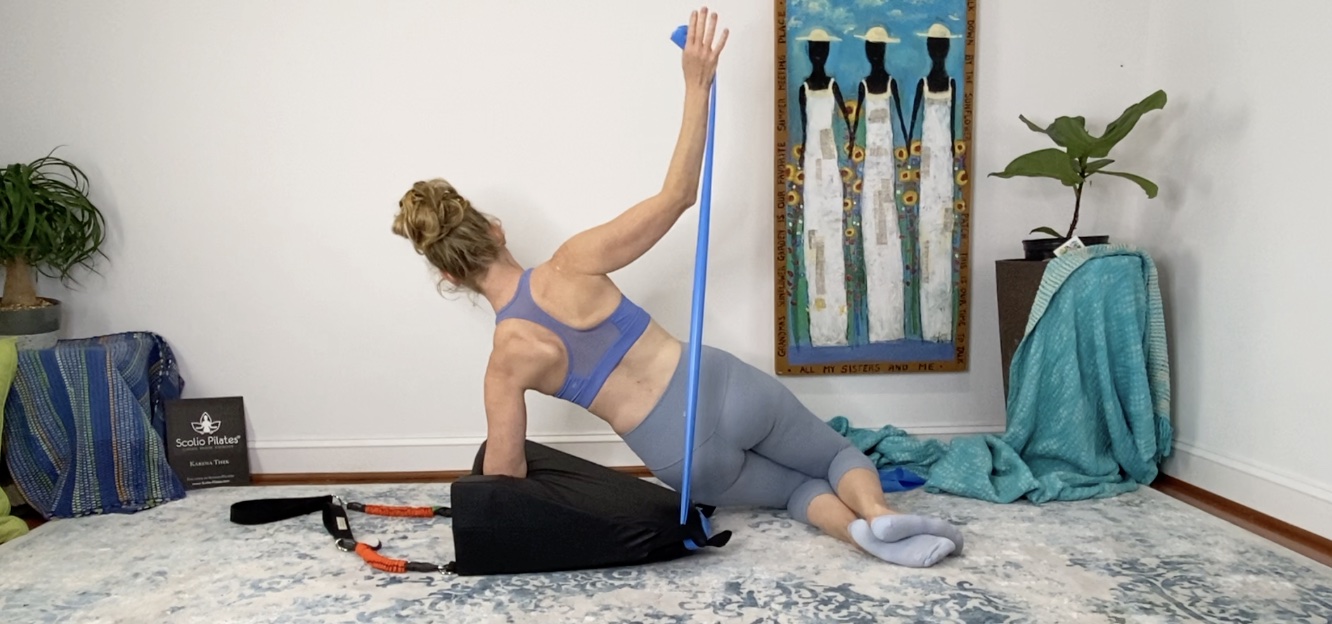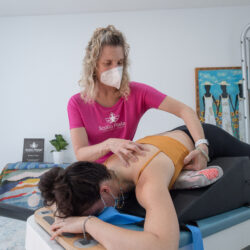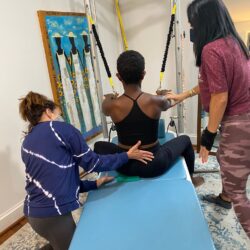By Karena Thek, author and founder of Scolio-PilatesⓇ
You have a new client with scoliosis, and now you are researching the heck out of exercise for scoliosis. I get it. You are afraid of doing the wrong thing, choosing exercises for scoliosis that could make the problem worse or increase pain for your client. You would not be the first instructor to be frozen in her tracks over scoliosis. You also would not be the respected instructor that you are if you weren’t doing your due diligence to research the unique challenges that each client brings you. That’s what makes you great at what you do. So, let’s talk then about scoliosis and the first few things to consider when planning exercises for your scoliosis client so you can avoid the 5 most common mistakes and leave the fear behind in choosing exercises for scoliosis clients.
#1 Don’t treat scoliosis as if it’s “not scoliosis.”
When you open an anatomy book, and you see a graphic of a typical spine, you do not see scoliosis. You see a straight spine without side bends and without rotations. You know how to work with that spine; that’s the spine that all of your Pilates training was based on. But what about a spine that does have side bends and rotations? Try this: Lie on the floor side-bend so that your left shoulder moves a bit closer to your left hip. Now, push the right side of your back into the floor so that the left ribs don’t touch the floor. Now do a Roll-Up. Right. That’s what it feels like to have scoliosis and do a typical Pilates exercise.
Now you know that you can’t manage scoliosis as if it were a regular straight spine. You’ll have to find exercises that work for the unique spine in front of you.
#2 Don’t be afraid of making the scoliosis problem worse.
While yes, you should be choosing the correct exercises, scoliosis is bigger than you and me. Scoliosis will ultimately do what scoliosis wants to do. Even if we 100% provide the absolute best exercises for scoliosis, the scoliosis spine may not respond. At the very least, we are hoping for the stabilization of the curve. If you are providing the correct exercises and the spine continues to destabilize, and the curve gets worse, it isn’t your fault. It is also definitely not the fault of the client with scoliosis. Many factors go into the continuing destabilization of the scoliosis spine—connective tissue changes, neuro-muscular challenges, syndromes, disease, and many other considerations as well. Doing the wrong Pilates exercise is not the cause of scoliosis, nor has it ever been linked to worsening scoliosis. Choosing the best scoliosis exercise that you can base on what you currently know about scoliosis and move forward!
#3 Don’t offer false hope.
There’s a lot of promise out there for scoliosis. The problem is whether that promise has any truth behind it. There’s a recent study (Monticone, et al 2014) that talks about the positive effects of scoliosis-specific exercise (like Scolio-Pilates) on reducing and stabilizing curves. That’s awesome, and we are super thrilled to be a part of the scoliosis exercise community and to be able to point to that and other studies about the positive effects of what we are doing. However, we still don’t promise our clients that there will be a miraculous change. Instead, we say, “You are a study of one. These are our past results; now, let’s see what we can do, together.” It’s a study that takes a team effort. Work together with your client to see what you can both learn.
#4 Don’t steer away from the medical community.
Most of your scoliosis clients have a relationship with a medical doctor, specifically an orthopedic surgeon. These doctors have great insight into what will and will not help your client. Pick up the phone. Call these doctors. Ask what they recommend in terms of exercise for your client. Ask if surgery is an option and how you can support your client in getting stronger before or after surgery/physical therapy. When we started Scolio-Pilates, exercise was not considered part of the paradigm for managing scoliosis. That has changed. Dayton Children’s Hospital, in Ohio, was just chosen as one of the best Orthopedic Children’s Hospitals in the United States. What options do they offer their scoliosis patients? Observation, bracing, surgery, and yes, Scolio-Pilates. Their entire physical therapy team has been trained in the Scolio-Pilates techniques. So, don’t be afraid to reach out and start a conversation!
#5 Don’t Wait.
You haven’t had scoliosis-specific Pilates exercise training? Don’t worry! You can start where you are. That’s what we all do. You’ll be able to see what exercises work better than others, and you’ll just keep making the best decisions you can. Don’t fret. Just move forward. I have confidence in you. More importantly, your clients have confidence in you.
Your scoliosis clients can be a bit intimidating because their spines don’t follow the same rules as a non-scoliotic spine. Don’t let that stop you. Every client is a learning experience. Think of your scoliosis client as a graduate degree in Pilates. Your scoliosis client is going to learn a lot from you. Just don’t be surprised if you learn a lot more from them.
Do you want to see what scoliosis-specific exercises look like and how it is done? Go to our Instagram page and see the beautiful work our practitioners have been doing!
Are you ready to start today? Whether you are someone living with scoliosis or a professional helping those with scoliosis, join our Scolio-Pilates On Demand here. You will have two weeks of free scoliosis-specific exercises with a live class every Thursday at 3 pm ET (New York, USA) and access to over 100 classes. It’s time to take control. Be a Scolio-Mover!”
Are you a professional looking to serve those with scoliosis? Learn the steps towards becoming an Authorized Scolio-Pilates Practitioner.



